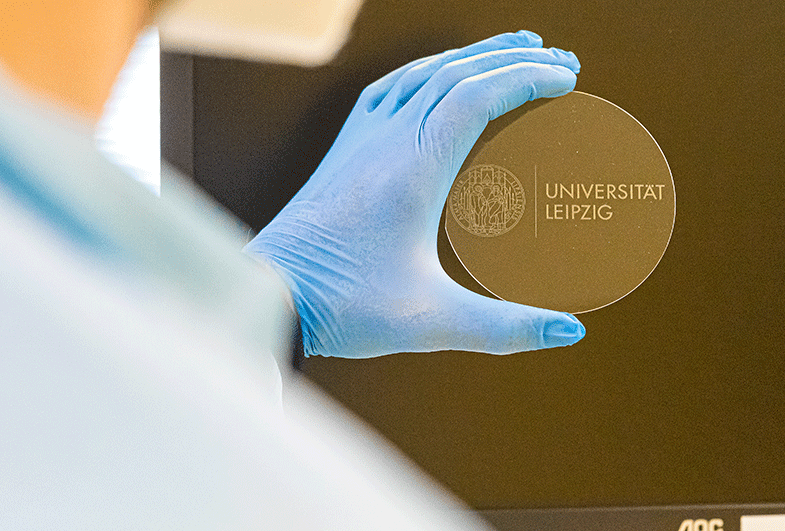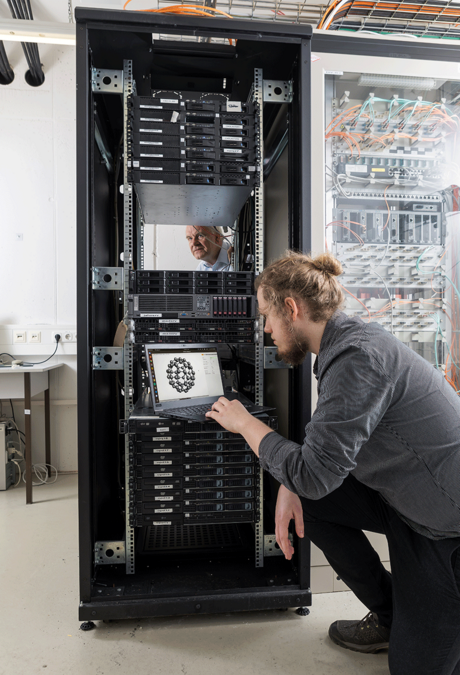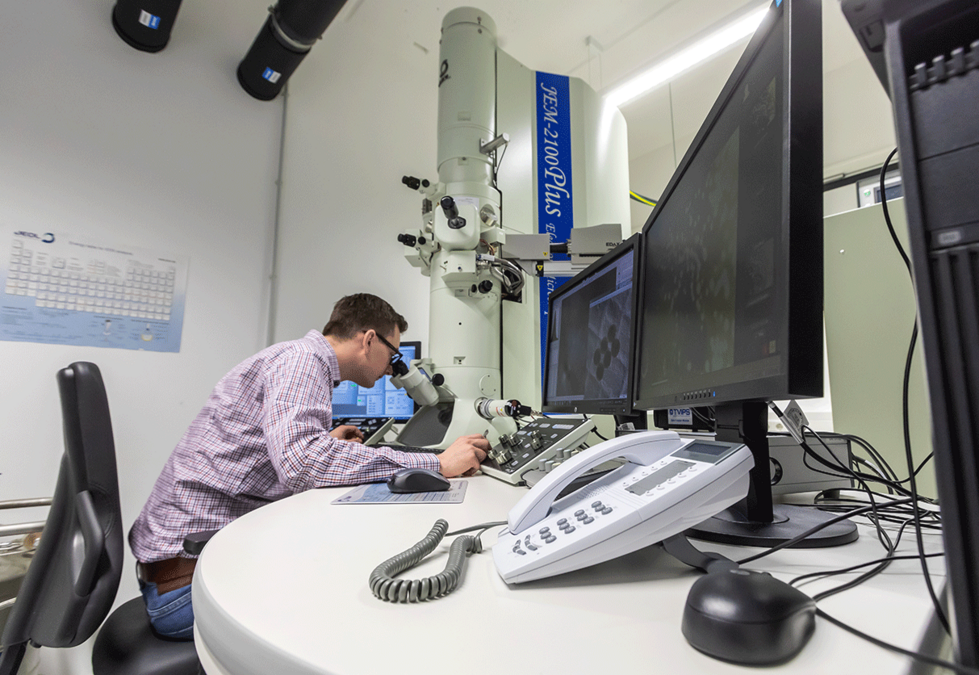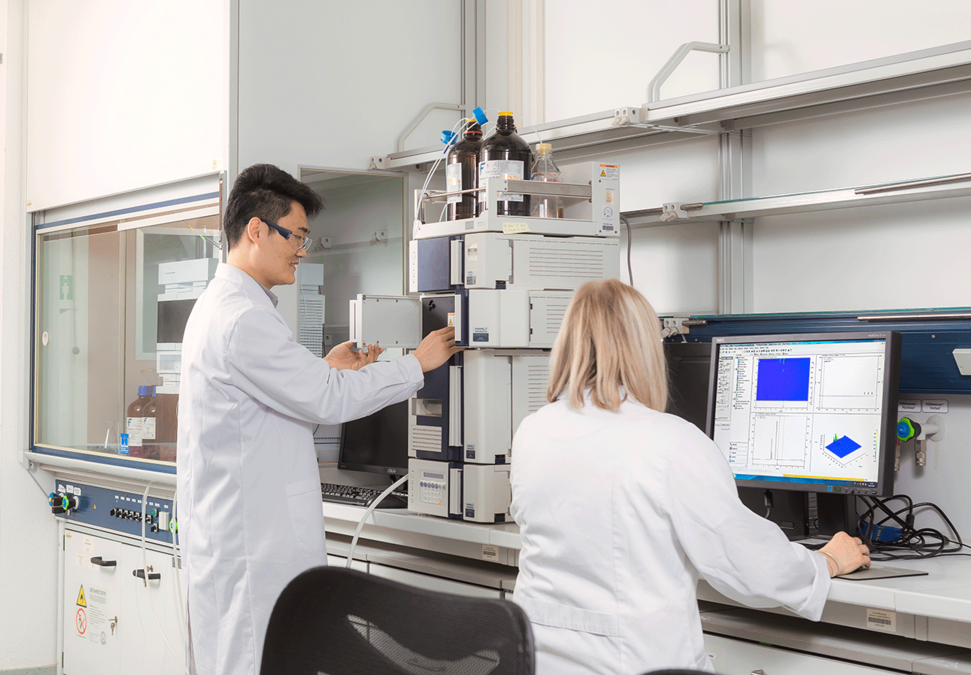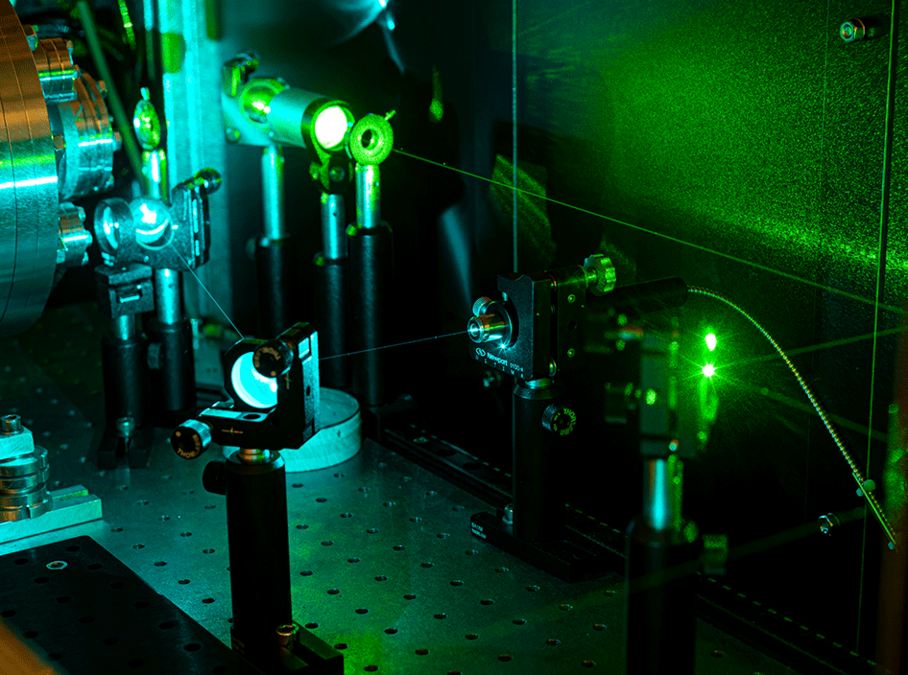The leading theme of the Research Training Group 2721 “Hydrogen Isotopes ¹²³H” is fostering fundamental research and education in the field of hydrogen isotopes to gain an atomic-level understanding of nuclear quantum effects in nanostructured materials and hydrogen-bonded networks in order to develop enabling technologies for H/D/T separation, D/T labelling and T detection.
Research Training Group 2721: Hydrogen Isotopes 1,2,3H
Hydrogen’s three naturally occurring isotopes, protium (H), deuterium (D) and tritium (T) are the focus of this Research Training Group (RTG). While H (in the form of H2) has received the attention of almost weekly news reports as a renewable and sustainable energy carrier (green hydrogen), the use of D and T as clean fuel for future fusion reactors is less well known, but not less important. Training tomorrow’s workforce in emerging technologies that exploit the unique properties of the hydrogen isotopes will, in the long run, contribute to an emission-free energy supply for the planet.
1,2,3H’s basic research and qualification programme is necessarily more focused. It is motivated by recent, high-impact applications in diverse fields ranging from drug metabolomics, over nuclear energy to materials science. For example, (i) single-step, late-stage labelling approaches, including tritiation, dramatically improve the availability of radiolabelled compounds as tracers in drug profiling and toxicity assessment. (ii) The revolutionary Wendelstein-7X (stellarator) concept and the construction of a new-generation International Thermonuclear Experimental Reactor (ITER) plasma chamber both inspire hope that nuclear fusion using deuterium and tritium as a clean fuel may become an alternative form of power generation in the near future. (iii) Novel materials have been proposed for highly selective hydrogen isotope quantum sieving. The conception of the RTG has been inspired by our improved molecular-level understanding of nuclear quantum effects, e.g. in proton diffusion through hydrogen-bonded networks, recent ground-breaking developments exploiting two-dimensional crystals as membranes for proton/deuteron separation, and research showing the potential of zeolites and metal-organic frameworks for D2/H2 separation.
Innovation in 1,2,3H is catalysed by cooperation of 14 key scientists at the research location Leipzig. They combine state-of-the-art approaches to prepare and characterize clusters and nanoparticles in the gas phase (Asmis), soft-landed molecular ions (Warneke), electro- and photocatalytically functionalized molecules (Gulder, Zeitler), 2D materials (Abel) and porous inorganic 3D networks (Gläser, Krautscheid) as well as to computationally predict and analyse their properties in the isolated and condensed form (Heine, Kuc, Tonner-Zech). These approaches are complemented by ultrasensitive characterization techniques using hyperfine spectroscopy (Pöppl), microfluidic devices (Belder) and experimental isotope separation and T-detection (Fischer).
Interdisciplinarity in 1,2,3H adds competence compared to traditional programmes in chemistry or physics, e.g. by providing a sufficiently broad basis for understanding the multi-faceted properties of hydrogen isotopes, from the fundamental quantum mechanical principles to more applied aspects in the implementation phase involving analytical and synthetic chemistry as well as chemical technology. In addition, the RTG is integrated into the central service facility for the promotion of young scientists at the Leipzig University, the Research Academy Leipzig. The following measures ensure a high quality standard, take our qualification programme beyond the text-book-knowledge level and promote thinking outside the box:
- Each doctoral researcher benefits from a supervision agreement, a personal development plan and a research data management plan. The latter two documents are updated regularly.
- A dedicated training in radiochemistry and radioanalytical methods is, for safety reasons, mandatory for all researchers carrying out T-based work. This removes an important bottleneck by increasing the number of chemists with profound and certified knowledge in radiochemistry, who will be qualified to handle radioactive materials in their future careers.
- 1,2,3H relies on an intimate interplay between theory and experiment. Theory and computation provide fundamental insights and link the various experimental groups. For example, highly sensitive and selective experiments on gas-phase clusters allow benchmarking the state-of-the-art computational methods dealing with nuclear quantum effects, which can then be applied to predict materials with explicit tritium content, and to more complex systems.
- The introduction of “lab-on-a-chip” technology offers a new approach to current radiochemical challenges, allows the combination of different functionalities on a single chip, and promotes the networking of traditional scientific disciplines. Tailor-made microfluidic devices (analytical chemistry) are key in developing improved tritium-detection strategies (radiochemistry), pave new catalytic synthesis pathways to radioactively labelled tracer drugs (organic chemistry), and open up the possibility of isomer-specific identification of solution-phase reaction intermediates using gas-phase ion spectroscopy (physical chemistry).
- 1,2,3H recruits internationally. All doctoral researchers are encouraged to do research stays abroad and to actively participate in international conferences. Mercator fellowships are established to intensify long-term collaborations.
